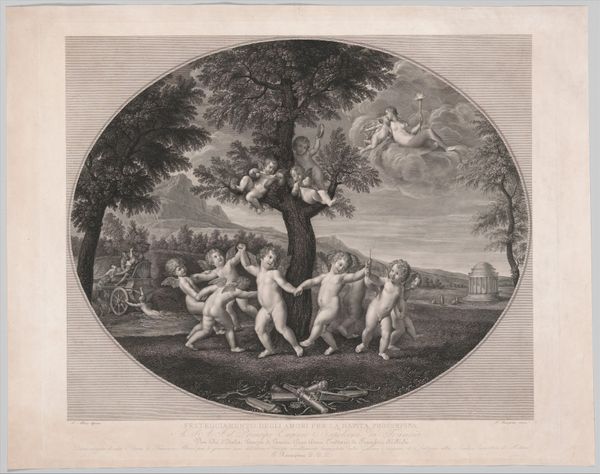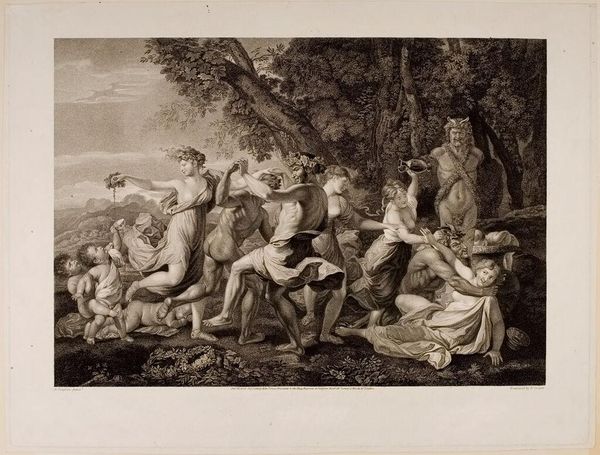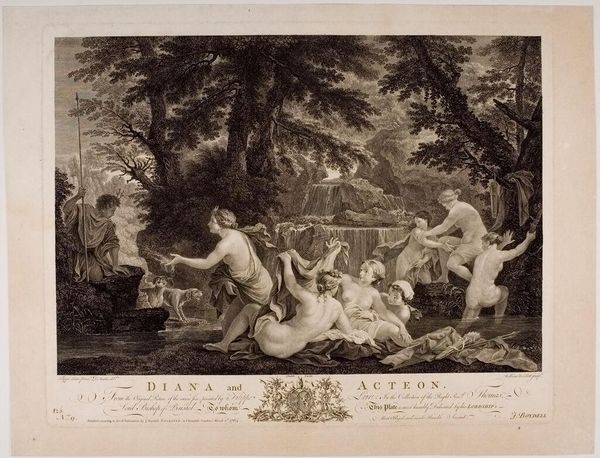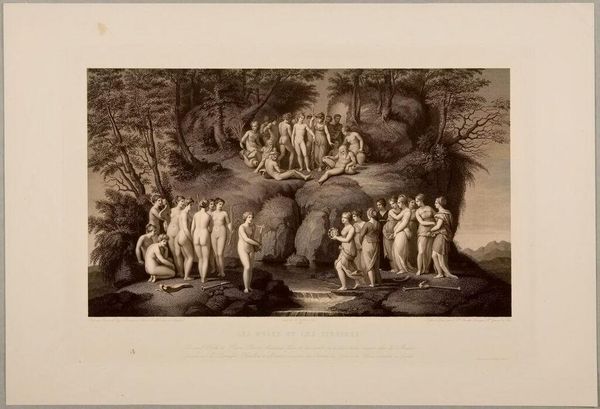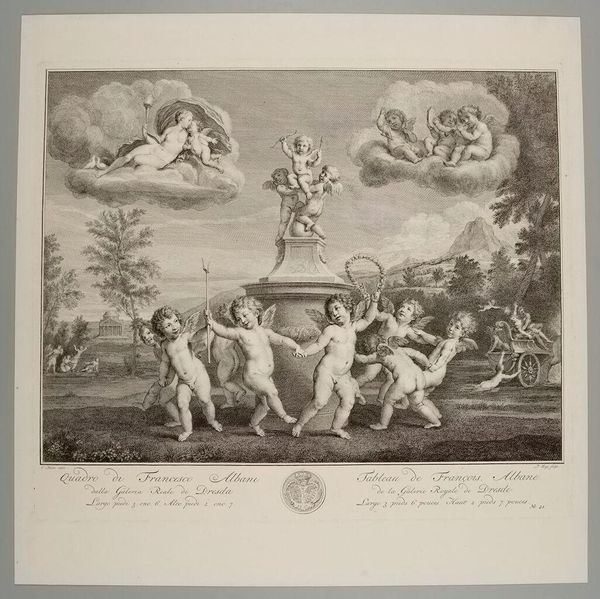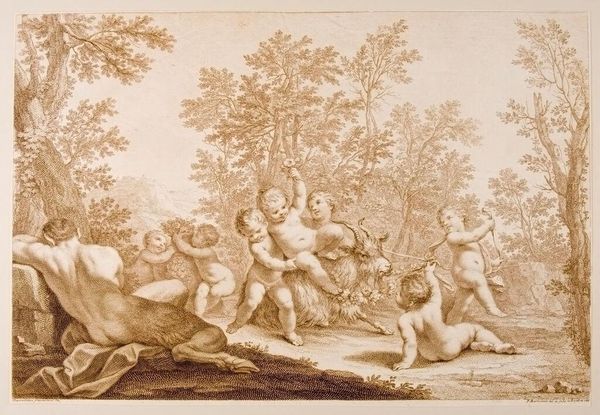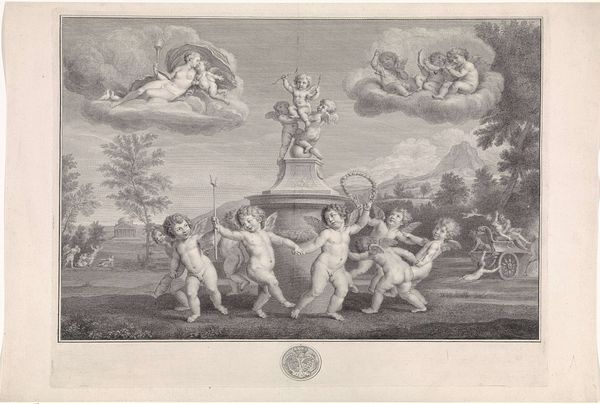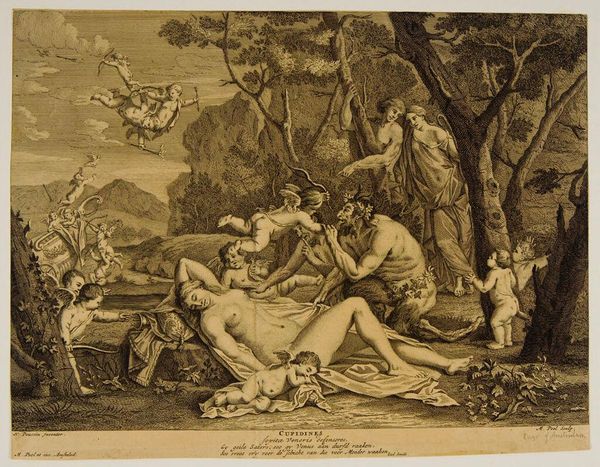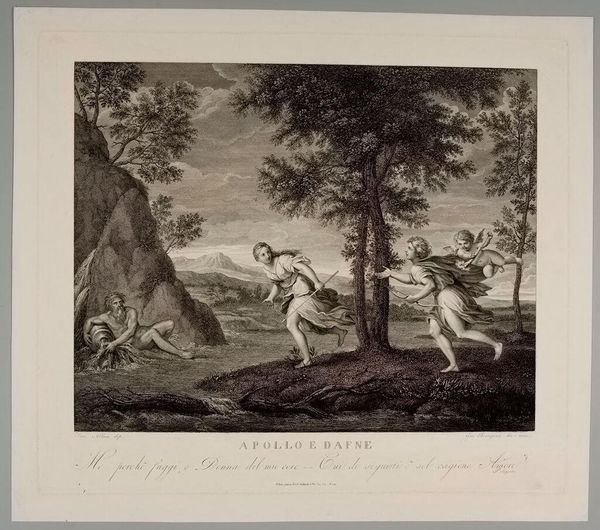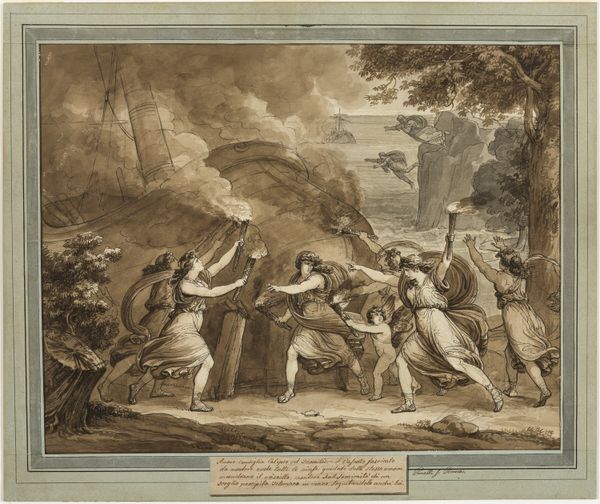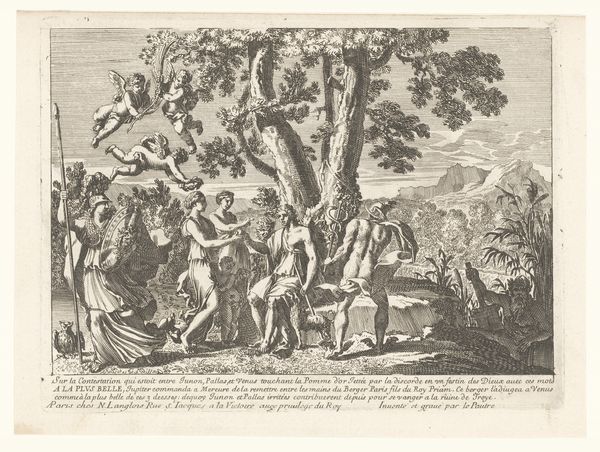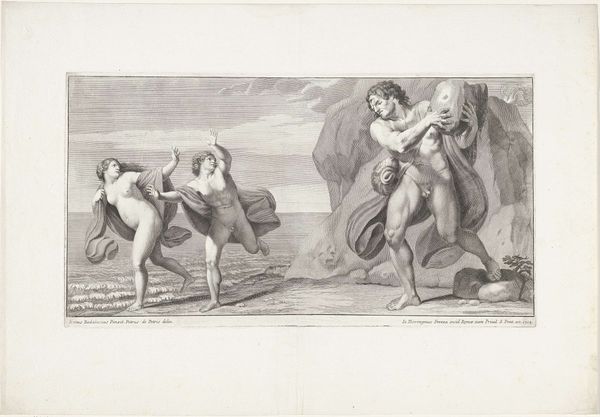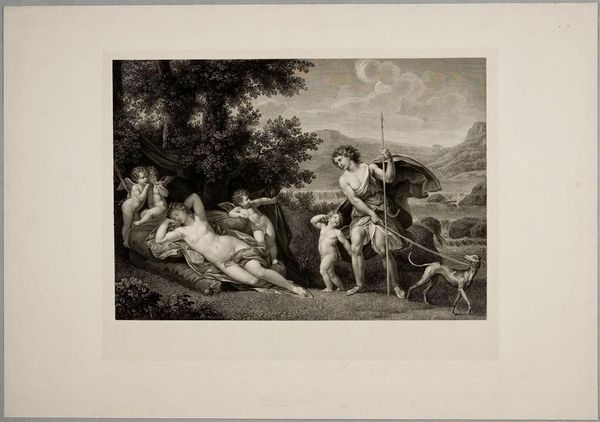
Dancing Amoretti, with Rape of Proserpina c. 18th century
0:00
0:00
Copyright: CC0 1.0
Editor: This print, "Dancing Amoretti, with Rape of Proserpina" by Francesco Rosaspina, shows a circle of cherubs, almost like a game. It's quite detailed. What strikes you about this piece? Curator: Let's look at the material process. This is an engraving, a method that requires skilled labor and specialized tools. The print's existence implies a market, a demand for classical imagery reproduced for wider consumption. How does this circulation impact its original meaning? Editor: So, you're saying it's not just the image itself, but how it was made and who it was for that matters? It changes how we understand it? Curator: Precisely. By understanding the means of production, the labor, and the intended audience, we gain insight into the social and economic context of the artwork. We learn about the consumer's place in society. Editor: That's a perspective I hadn't considered. Thanks!
Comments
No comments
Be the first to comment and join the conversation on the ultimate creative platform.
